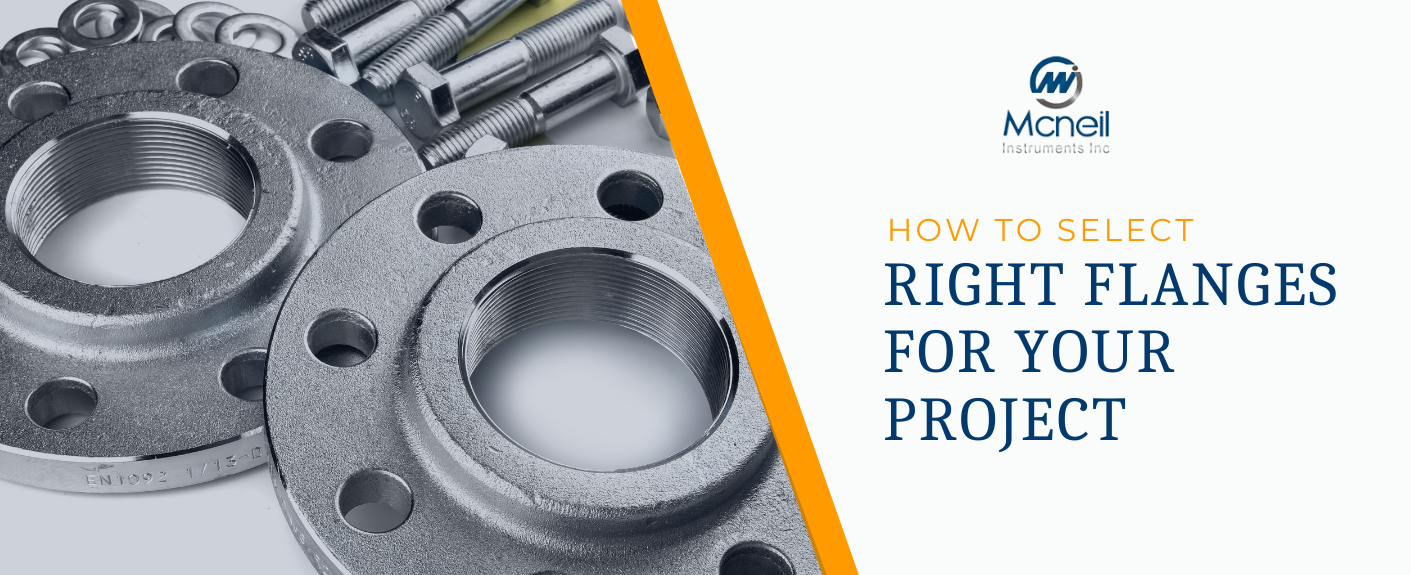Choosing the correct type of Stainless-Steel Flanges for your project is a big job that needs careful thinking. Picking the right flange makes sure pipes connect securely without leaks. With many options out there, choosing the best SS flange can feel overwhelming. But with the right knowledge, you can find the perfect flange for your needs. Let’s dive into how to pick the right stainless steel flange for your project.
What Are Stainless Steel Flanges?
SS flanges connect two parts of piping systems. They seal tightly to prevent leaks and allow easy access for checking or fixing. Usually, they’re made of stainless steel, which fights corrosion well and is strong, good for many uses. They seal tight at any temperature without leaking, and they’re strong, even in tough conditions like high heat or harsh environments.
Flange Sizing And Dimensions
First, figure out the size and thickness of the pipes you’re connecting. Also, know the pressure and temperature of the fluid in the pipes. And decide what kind of connection you need.
Flange Material
Next, think about what kind of stainless steel you need for the environment where the flange will be. There are different grades like 304, 316, and 347, each good for different situations.
Flange Standards
Different places have different rules about flange sizes, dimensions, and materials. Make sure the flanges you get meet the standards where you are so they work well.
Types of flanges available?
Flanges come in different types, like socket weld, threaded, and slip-on. Pick the one that works best with your piping system. For example, use threaded flanges for smaller pipes and slip-on ones for larger ones.
There are numerous flanges developed to support varying pipelines and plumbing works. Some of the most commonly accessed flanges include slip-on flanges, weld neck flanges, socket weld flanges, and blind flanges.
Let’s look at the detailed explanation of the working of these flanges.
Weld Neck Flange
A weld neck flange is like a long, tapered tube that connects pipes securely. It helps to spread out pressure in the pipe and prevents it from building up too much at the bottom. These flanges work well for both high and low-pressure pipes. They have a circular part that fits around the pipe and a raised edge. They can handle pressure up to 5000 pounds per square inch (psi).
Long Welding Neck Flange
This is a special type of flange that’s long and skinny. It helps make a strong connection between pipes.
Slip-on Flange
A slip-on flange is a ring that slides onto the end of a pipe. It sticks out a bit so you can weld it to the inside of the pipe. These flanges are bigger than the pipe’s outside, so they fit nicely over it. They’re good for low-pressure pipes.
Threaded Flange
Threaded flanges look a lot like slip-on ones but have threads on the inside. This makes them great for small pipes with high-pressure liquids or gases. The good thing is, you don’t need to weld them.
Socket Weld Flanges
These flanges are different because they only need one weld on the outside. You put the pipe into the flange and lift it slightly before welding. This makes sure the pipe sits right in the flange.
Blind Flange
Blind flanges don’t have a hole in the middle. They’re used to block off pipes or valves. They’re strong and can handle a lot of pressure. Plus, they’re easy to remove when you need to get into the pipe.
Dimensions and Pressure Ratings for Flanges
– ANSI, MSS- SP-44, BS3293, API 605 150lb through to 2500lb
– Flange Facings: Raised Face, Ring Type Joint, Large Tongue & Groove, Small Tongue & Groove
– BS4504 – PN6, 10, 16, 25, 64
– BS10 – Table D, E, F, & H
– DIN Standards
Referred Standards of Flanges
- B16.5 Dimensional standard for steel pipe flanges and flanges fittings
- B16.34 Valves connect by flanges, threaded and welding end
- B16.47 Large diameter steel flanges
- SP44 Standard for steel pipe line flanges
- API 605 large diameter carbon steel flanges
Coating Types of Flanges
There are several types of coatings to protect carbon steel flange from rusting or corrosion:
- Anti-rust painting
- Oil Varnished
- Electric zinc coated (White or yellow zinc)
- Alloy material coated (Lined or Clad)
Flange Manufacturer And Supplier
Make sure the company you get your stainless steel flanges from is trustworthy and makes good products. Look up reviews and ask other people in the industry for recommendations.
Stainless steel flanges are important for many industries. When you’re choosing one for your project, think about size, material, type, standards, and where you’re getting it from. Picking the right flange can really help your piping system work well. Keep these tips in mind, and you’ll find the perfect stainless-steel flange for your project.
Mcneil Instruments is known as a leading manufacturer, supplier, and exporter of good quality flanges in India. With their expertise and commitment to excellence, they ensure that their flanges meet industry standards and exceed customer expectations. Whether it’s carbon steel, stainless steel, or other materials, Mcneil Instruments delivers reliable products that contribute to the success and safety of projects in the oil and gas industry.





